Occupying about a third of the Portuguese territory, Alentejo is a region with a lot to offer and is becoming more and more a destiny of choice for Portuguese visitors even though it is still an unknown paradise for visitors from other nationalities. Read my 7-day travel guide and discover the wonders that will make you want to visit Alentejo.
Information: The starting point for this travel guide is the airport of Lisbon and the final destination is the airport of Faro. If you can, try to arrive to Portugal in one of the first flights and leave in one of the last flights so that you can better enjoy your stay in the country.
To fully enjoy your holidays in Alentejo, I recommend that you hire a car by clicking here so that you can easily move from place to place and visit locations that aren’t accessible by other means of transportation.
Disclosure: This post may contain affiliate links, meaning i get a commission if you decide to make a purchase through my links, at no cost to you. Please read my disclosure for more info.
Travel guide of 7 days to visit Alentejo
Conteúdos do Artigo - Sommaire - Contents
Day 1 – Castelo de Vide – Marvão
On this first day I recommend that you rent a car and drive through the A1 and A23 highways, along the north shore of Tagus river, and enjoy the surrounding landscape.
Next, turn to Fratel Dam and drive towards your first destination: the beautiful and unique Serra de São Mamede Natural Park. This protected area will amaze you for its landscape diversity with hills and valleys and for its fauna and flora.

But it’s not only the natural beauty that you can admire in this place. This is also a place for beautiful villages and, because of that, you should make your first stop at Castelo de Vide.
You must go to this small town of Castelo de Vide when you visit Alentejo – it is one of the gems of this region, an amazing place where you’ll find traces from the medieval ages, everywhere you look.
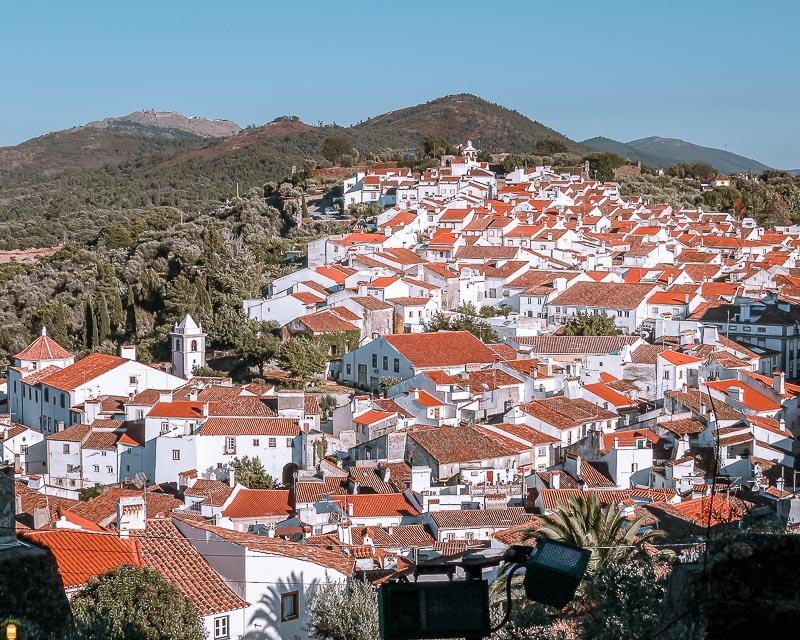
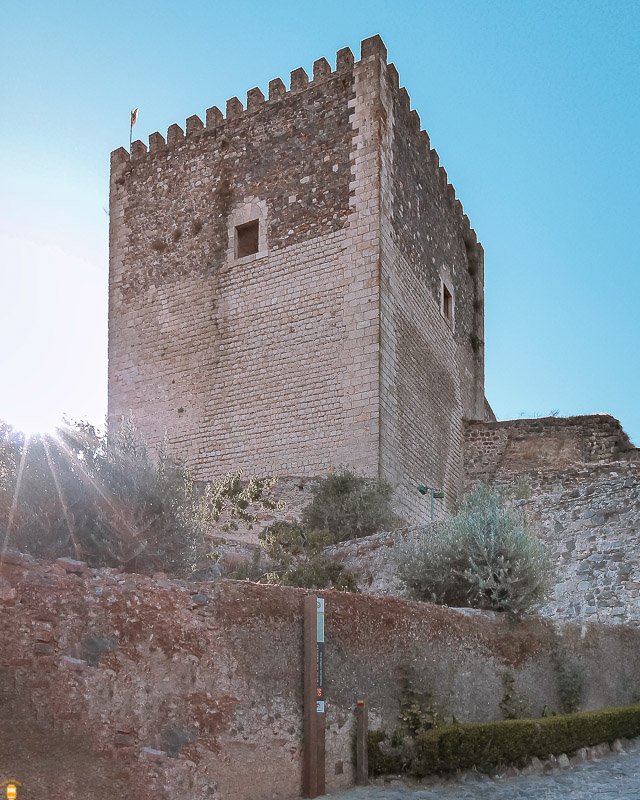

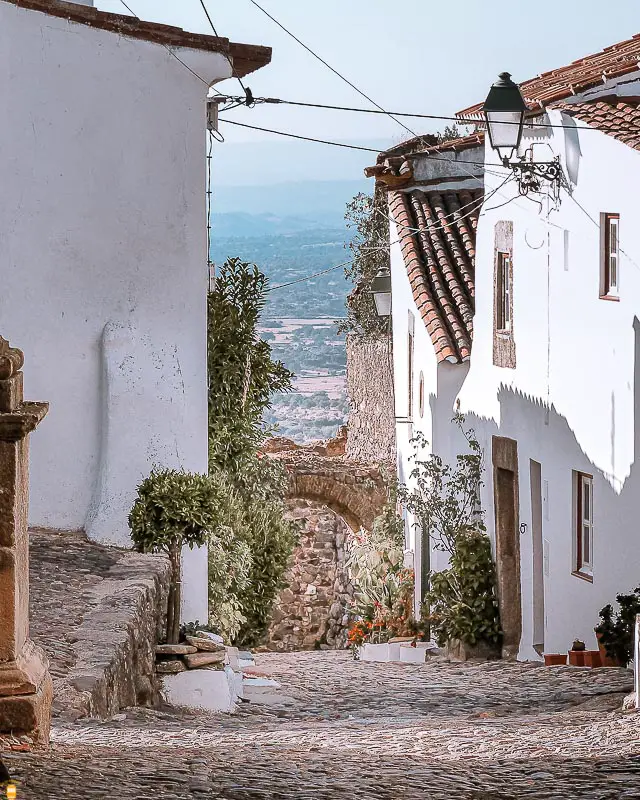
Dating back some centuries, this town has several points of interest that are worth your visit. Take some time to explore the narrow streets and discover places like:
- Castle of Castelo de Vide
- Jewish Quarter
- Fort of São Roque
- Renaissance fortifications (17th century)
After Castelo de Vide, drive to one of the living postcards of Alentejo, the amazing small town of Marvão.
Located just 10 km east of Castelo de Vide, this town proudly rises on top of the scarps of Serra do Sapoio, at an altitude of 860 metres. With a unique history and an unparalleled beauty, this place is on the list of candidates for UNESCO’s World Heritage Sites.
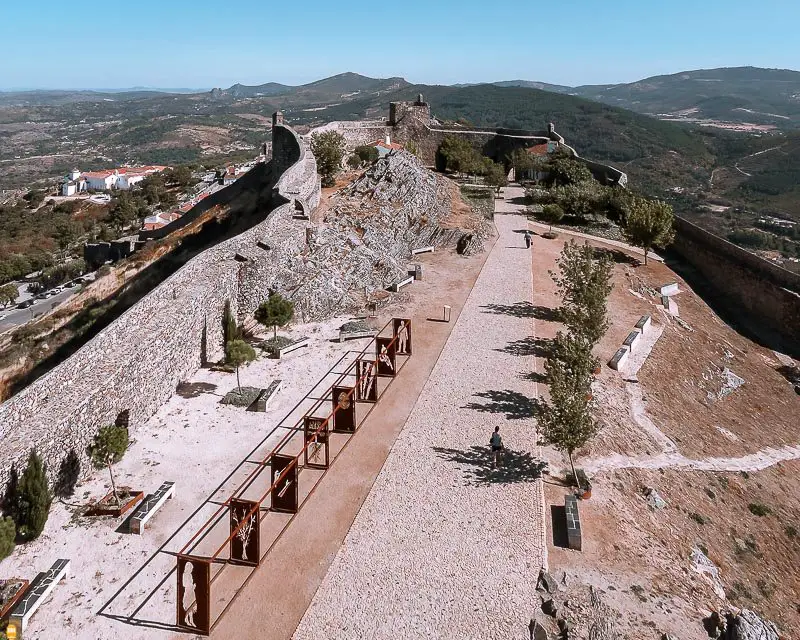
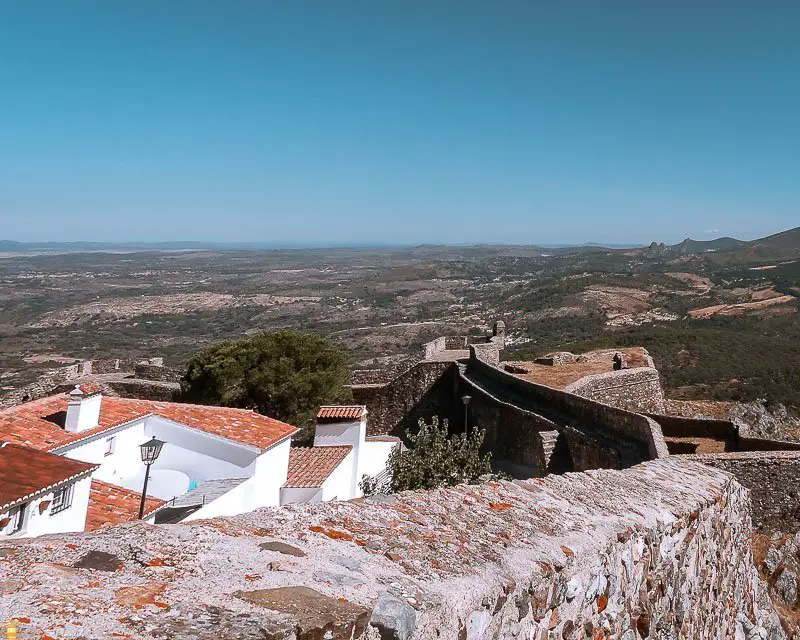
Park your car and lose yourself in the narrow streets of this small town protected by walls all around. Explore every corner and make your way to the beautiful castle of Marvão. From here, you’ll be able to admire the landscape that stretches for dozens of kilometres while you imagine how must have been living here centuries ago.
I recommend that, when you visit Alentejo, you spend a night in this beautiful town and enjoy one of the wonderful accommodations.
This well located 3-star hotel has rooms equipped with television and air conditioning. However, I can say that the jacuzzi on the terrace is what stands out in this hotel – if you can, enjoy the jacuzzi while you admire the surrounding landscape.
Another great place you should consider when you visit Alentejo and, in particular, Marvão, is this beautiful pousada. If you stay here for the night, know that you’ll also have at your disposal a wonderful restaurant where you can enjoy a typical Portuguese dish while enjoying the amazing surrounding landscape.
Day 2 – Elvas
On this second day you’ll be heading to the city of Elvas, World Heritage since 2012 and definitely a place to discover when you visit Alentejo.
Competing only with Évora as the city with the most points of interest in Alentejo, Elvas is a place to visit and there are many people wanting to explore this city, considered to be the biggest fortified city in Europe.
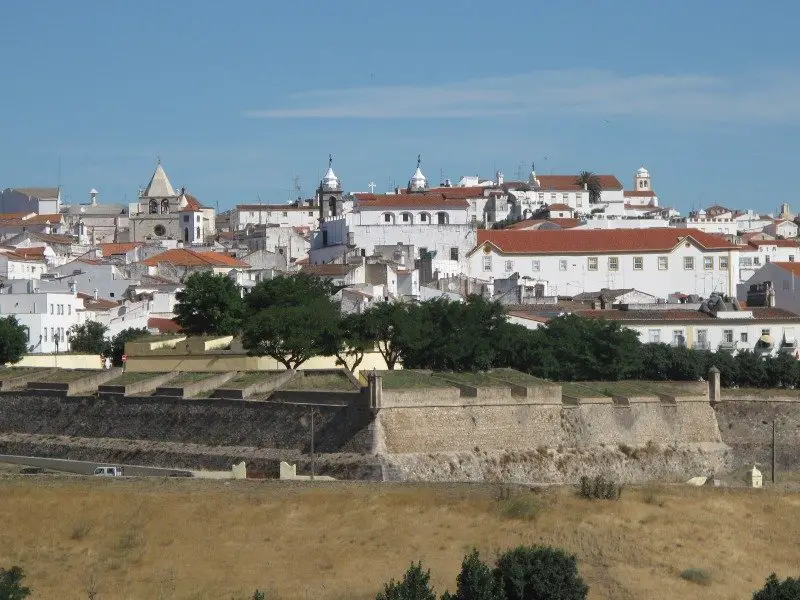
Even before you pass the ramparts limiting the historic centre of the city, you’ll face the majestic Amoreira Aqueduct. This is the biggest aqueduct in the Iberian Peninsula, with a maximum height of 31 metres and an approximate length of 7 km.
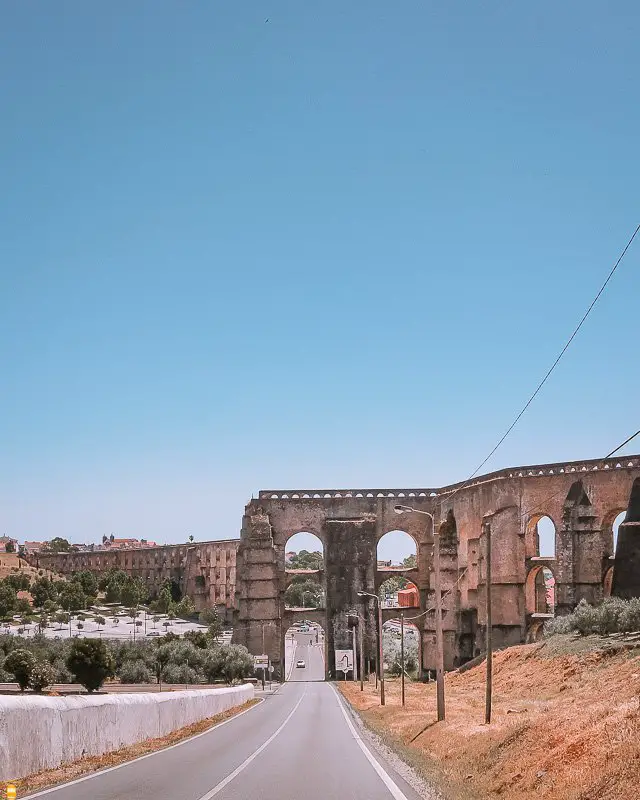
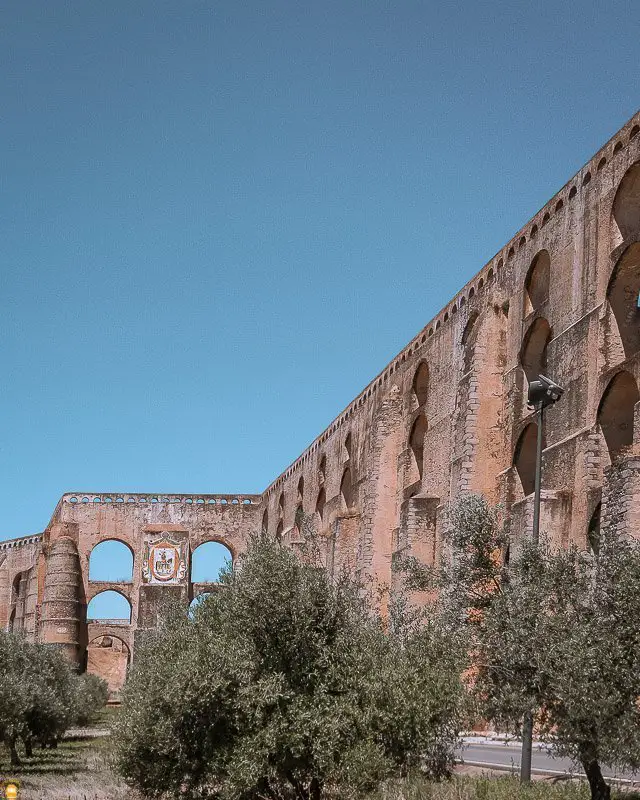
Drive past the ramparts and to the historic centre where you can park your car and explore the area.
Begin with a visit to the castle of Elvas. With Moorish origins, this castle has gone through several refurbishments over the centuries until it got to its final look; fun fact: this is considered to be the first Portuguese monument.
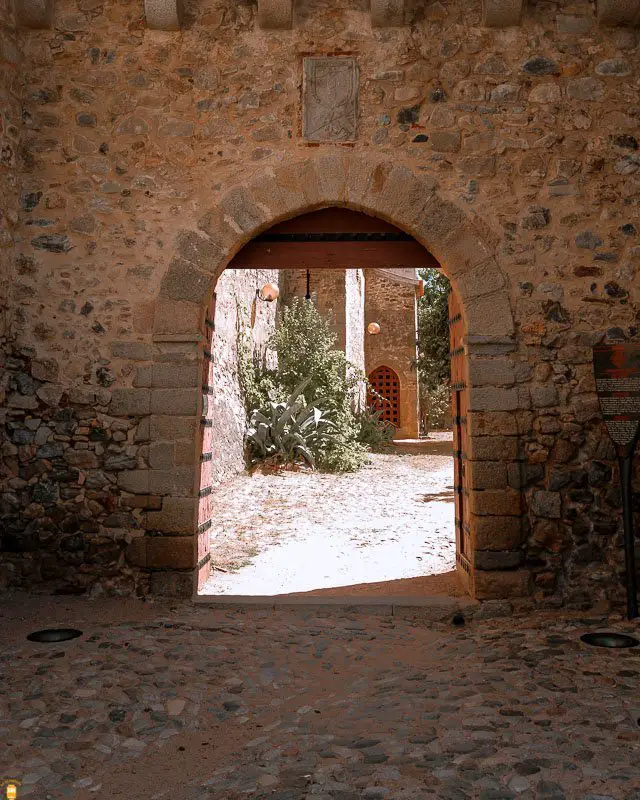
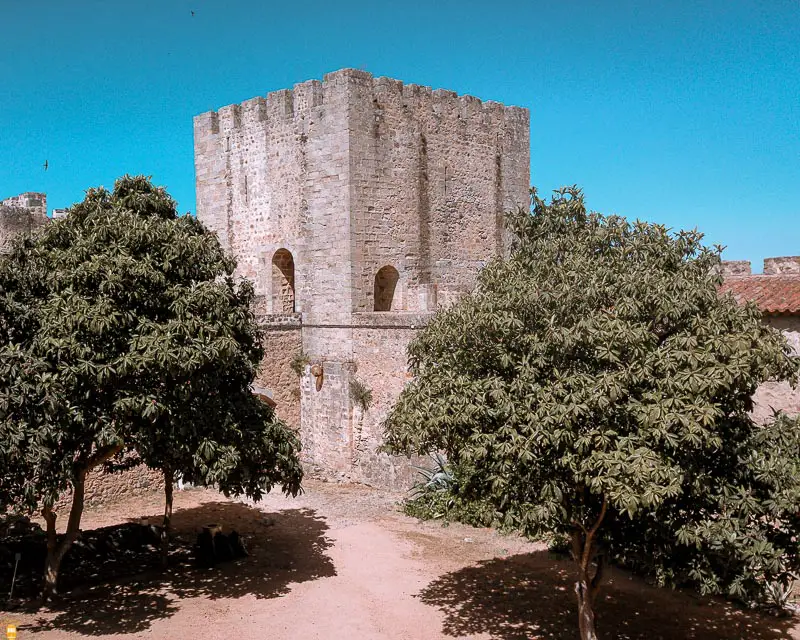
Next, stroll through the typical streets of the historic centre until you get to Praça da República square, a place where you’ll find the beautiful Nossa Senhora da Assunção Church. This was once the cathedral of Elvas and stands out for its Manueline and Baroque styles.

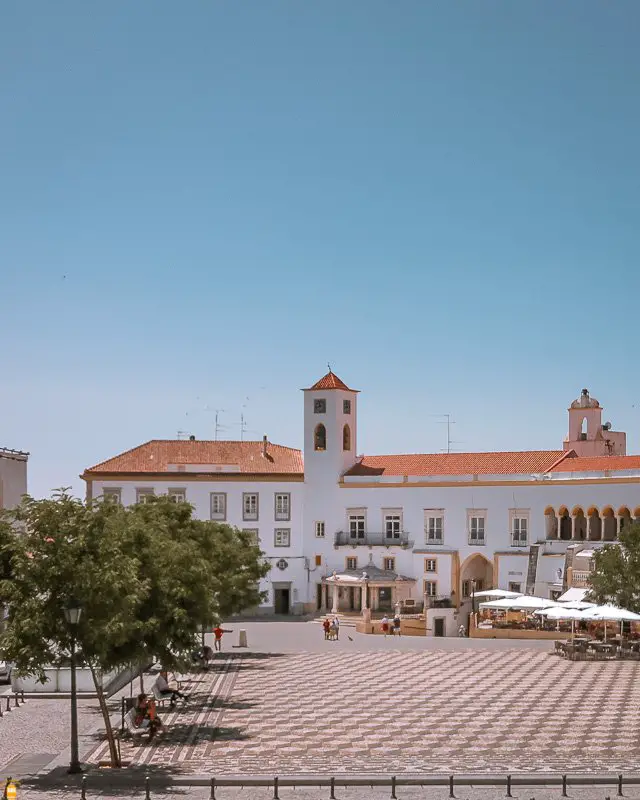
Don’t leave the citadel without exploring the fortifications and visiting other points of interest like the Cemitério dos Ingleses (British Graveyard), the Church of São Domingos and, if you like museums, don’t miss the opportunity to go to the Photography City Museum and Elvas Contemporary Art Museum.
There is still a lot to explore outside the citadel!
Return to your car and make a 2 km drive to the Fort of Santa Luzia, converted into one of the most beautiful military museums in Portugal, definitely a place you can’t forget when you visit Alentejo.
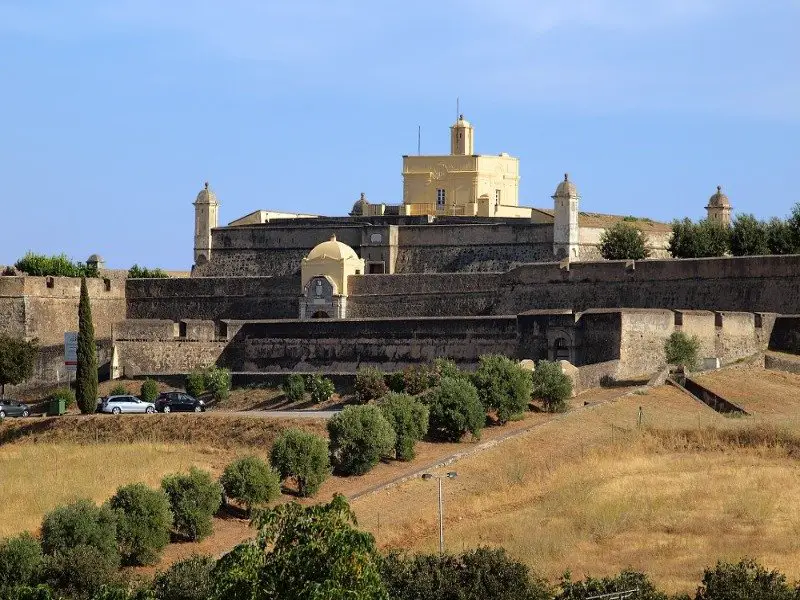
This star-shaped fort was built between 1641 and 1648 and played an important role in the defense of Elvas during the Portuguese Restoration War.
To the north of the Fort of Santa Luzia and Elvas you’ll find the impressive Fort of Nossa Senhora da Graça, a place to discover when you visit Alentejo.


This fort was built in the 18th century with the purpose of reinforcing the Portuguese military position along the border with Spain. Its construction was due to the strategic position of this place that, in previous battles, didn’t favour the Portuguese troops.
Despite being considered a Portuguese monument since 1910, this fort underwent a period of abandonment and degradation and it was only in 2015 that it regained its former glory and began welcoming visitors once again. Definitely one of the most beautiful monuments of military architecture in Portugal.
If you want to know more about this beautiful city, then read our article about Elvas, the biggest fortified city in Portugal and Europe.
To spend the night in Elvas, you should consider one of the following accommodations.
Hotel D. Luis is located close to the Amoreira Aqueduct and Elvas historic centre. Know that you’ll have at your disposal rooms equipped with satellite television and air conditioning; you can also go for a swim in the pool while you admire the magnificent aqueduct.
Located in an old convent, this 4-star hotel is inside the ramparts and offers a privileged view over the surrounding area. Enjoy all the amenities of this place, considered as one of the favourite accommodations for those visiting the beautiful city of Elvas. Definitely a place to consider when you visit Alentejo.
Day 3 – Vila Viçosa – Estremoz
You should begin this day with a small trip to the magnificent Vila Viçosa, located 35 km southwest of Elvas, where you can find one of the biggest and most beautiful palaces in Portugal: the Ducal Palace of Vila Viçosa.
Commissioned by D. Jaime, fourth Duke of Bragança, the construction of the Ducal Palace began in the 16th century and was enlarged by D. Teodósio I. This palace is one of the ex-libris of Alentejo and soon you’ll find out why.
At a first glance, what stands out when you get to this property is the magnificent and majestic marble facade, symbol of the great taste and wealth of the House of Bragança, which would become the Portuguese royal house as of the 17th century.
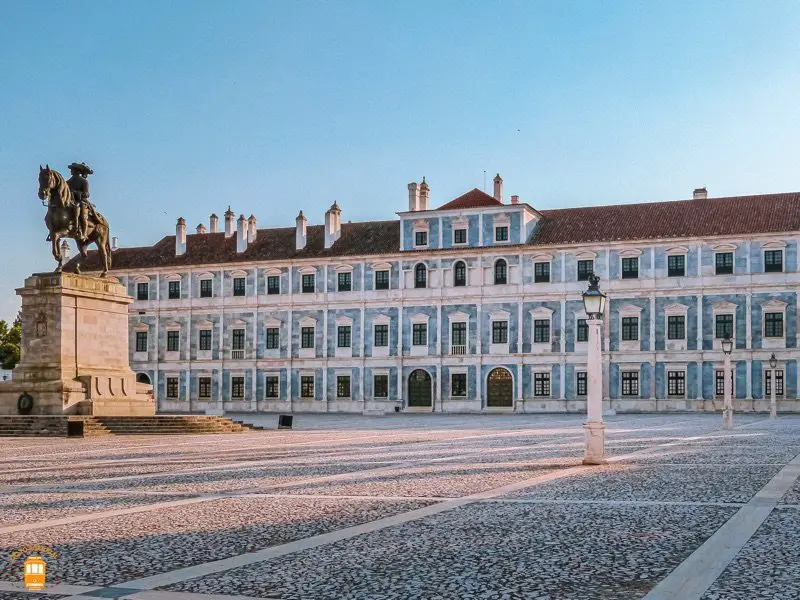
After admiring the wonderful 110-metre facade, take the opportunity to visit the palace. Explore, in a guided tour, the amazing rooms, halls, kitchen and other areas and be astonished with the priceless painting, sculpture, furniture, ceramics and jewellery collections.
In the afternoon, head to the beautiful town of Estremoz, located just 20 km west of Vila Viçosa.
Estremoz is an ancient and small town with a rich history. This place soon became important and here you’ll find some traces of Moorish and Roman occupation.
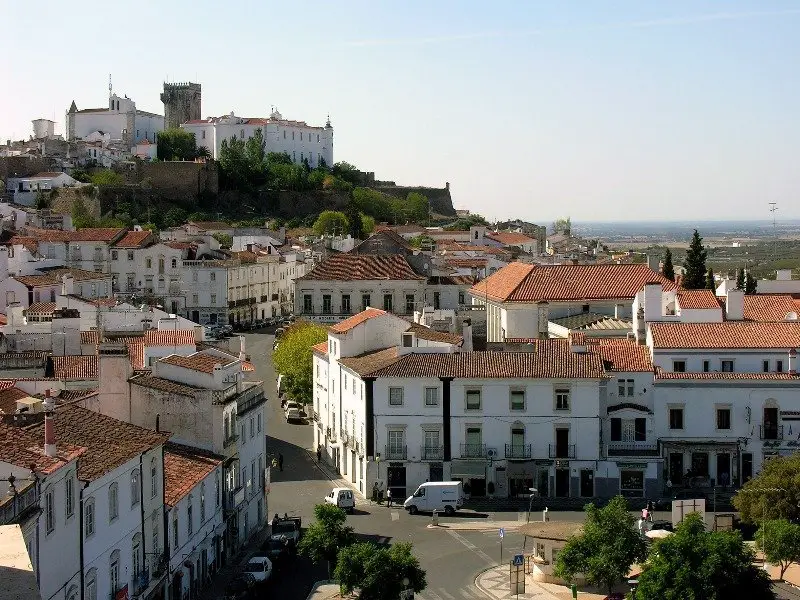
In fact, the Roman occupation was established due to Estremoz’s richness of white marble quarries. Among other works, this marble was used in the construction of the beautiful Roman temple in Évora and, later on, in the high altar of the cathedral of Évora.
Begin your visit to Estremoz by leaving your car in Rossio – Marquês de Pombal. This place is a huge square with some points of interest surrounding it.
Congregados Convent is the first stopping point and is located south of the square. The city hall is located here but you can take the opportunity to admire the beautiful entrance and stairway with an 18th-century panel with glazed tiles depicting war and hunting scenes.
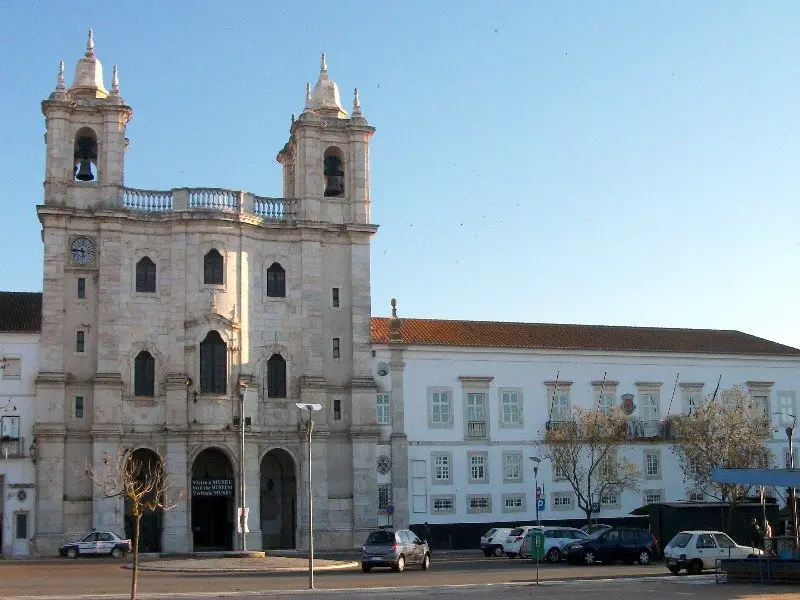
Beside, you’ll find the beautiful church which was inaugurated only in 1995, almost three centuries after the beginning of its construction, and the Religious Art Museum.
To the east of the square you’ll find São João da Penitência Convent, also known as Maltesas Convent.
This convent was built in the 16th century and is considered the only Portuguese women’s convent from the Order of Malta. Among other architectonic styles, Manueline and Renaissance styles stand out.
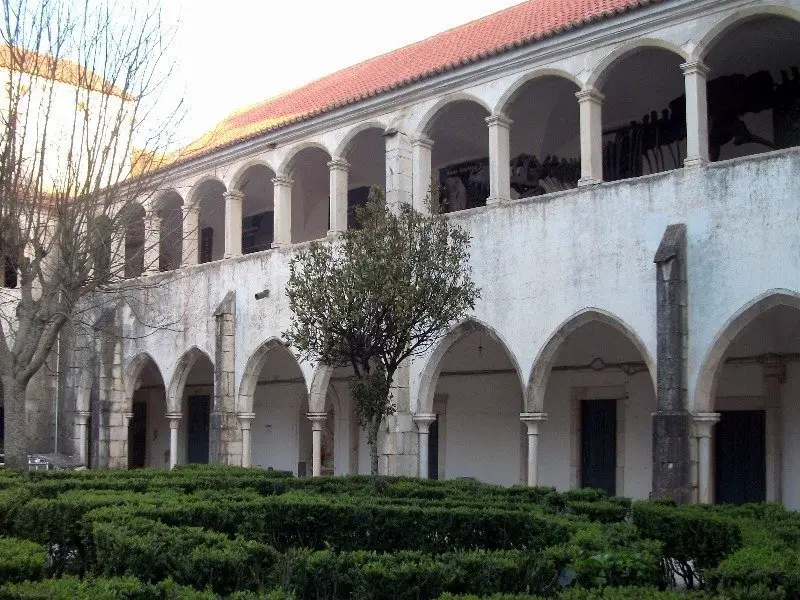
After being used for some time as a hospital, it is today Estremoz campus of the University of Évora and also Centro Ciência Viva, an interactive and pedagogical museum totally dedicated to Geology.
Next, go to the north of Rossio square, a place where you can admire the Convent Church of São Francisco. This church, considered a Portuguese monument since 1924, was built in the 13th century and stands out for its Gothic style but also for its Manueline traces, especially in the chapel of D. Fradique de Portugal.

Finally, to the west of the square, you’ll find Café Restaurante Águias d’Ouro, an example of Art Nouveau with an amazing facade and distinctive windows.
Finish your visit to this town with a stroll through the streets of the historic centre of Estremoz until you get to the Monumental Complex of Estremoz Alcazar.
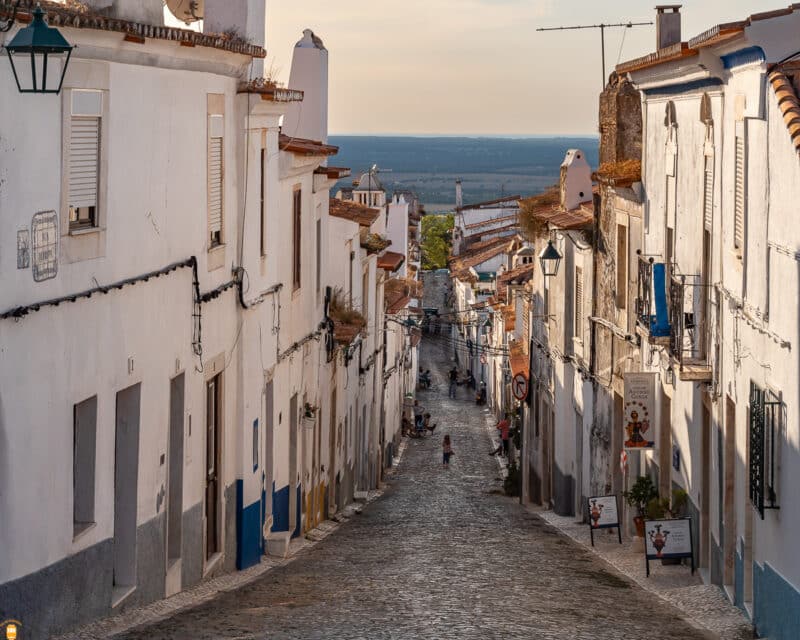
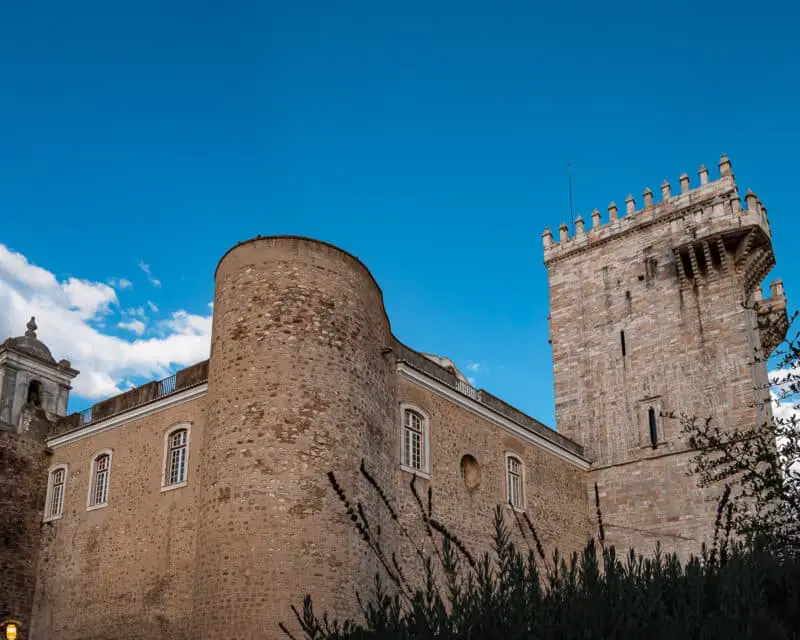
Here you’ll have the opportunity to admire some of the medieval traces of this town, like:
- Castle of Estremoz
- Chapel of Queen Saint Isabel
- Medieval ramparts
Dating from the 12th century, but with several improvements throughout the years, the castle of Estremoz and the whole medieval complex played an important role in the defense of the Portuguese territory, especially by the time of the Portuguese Restoration War.
When you visit Alentejo, don’t miss the opportunity to discover this place that was once one of the most important strongholds in Portugal.
Your day should end 45 km southwest of Estremoz, in the beautiful city of Évora, where you should spend the night. Next, find out my accommodation suggestions.
When you visit Alentejo, make sure you consider Moov Hotel Évora as a place to stay for the night. Despite being a 2-star hotel, Moov guarantees all the comfort and quietness that all the guests want to have for their holidays.
Among other amenities, we must point out the soundproof rooms, equipped with television and air conditioning; decoration is amazing and you’ll be able to enjoy your breakfast while relaxing in the beautiful courtyard.
Also located inside the walls of the historic centre of Évora, Stay Hotel Évora Centro is a place that combines a pleasant stay with affordable prices. Enjoy all the amenities of this hotel and take the opportunity to restore your energy before exploring this beautiful city.
Day 4 – Évora
On this fourth day, I suggest you explore the wonderful city of Évora. Located 130 km southeast of Lisbon, Évora has what it takes to amaze you.
Also known as the “museum city” because of its monuments that date back to the Roman Empire (but not only), Évora is one of the cities you must discover when you visit Alentejo.
This city has a beautiful historic centre with many points of interest and, because of that, it was listed as a UNESCO’s World Heritage site.
You can park your car just outside the city walls, in one of the available parking lots, or drive to the historic centre of Évora, located inside the walls, where you can also leave your car. Next, stroll through the streets and head to one of the main squares, Praça do Giraldo.
I suggest that you explore the historic centre on foot and take the day to get to know all the wonders of this city and, of course, savour the local gastronomy.
Don’t miss the opportunity to admire places like the Church of Santo Antão, Cadaval Palace, the Roman Temple, the Graça Church, the Chapel of Bones (Capela dos Ossos) and the Public Garden where you can find the Palace of D. Manuel.
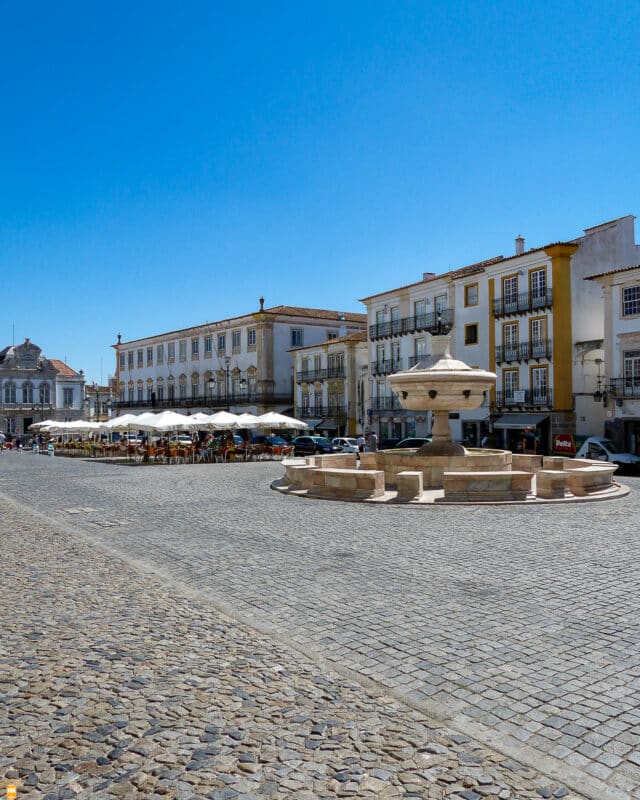
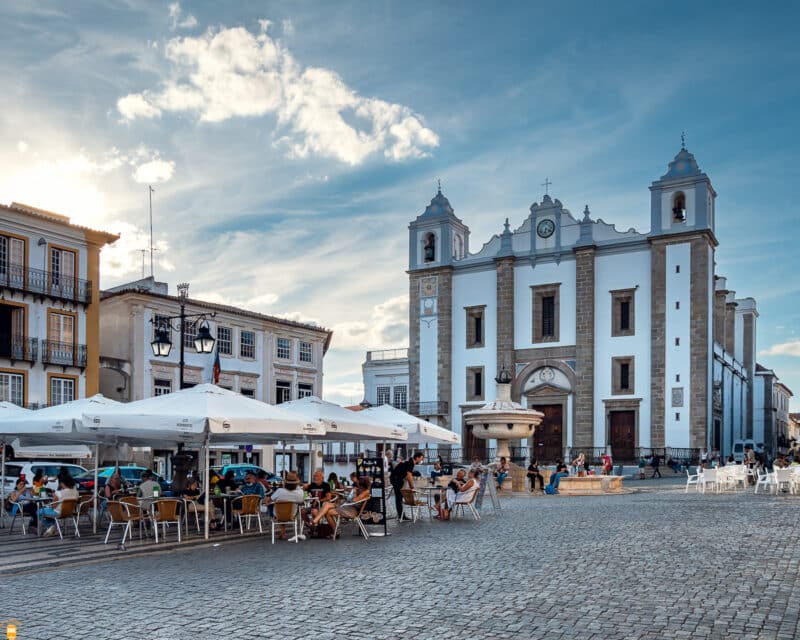
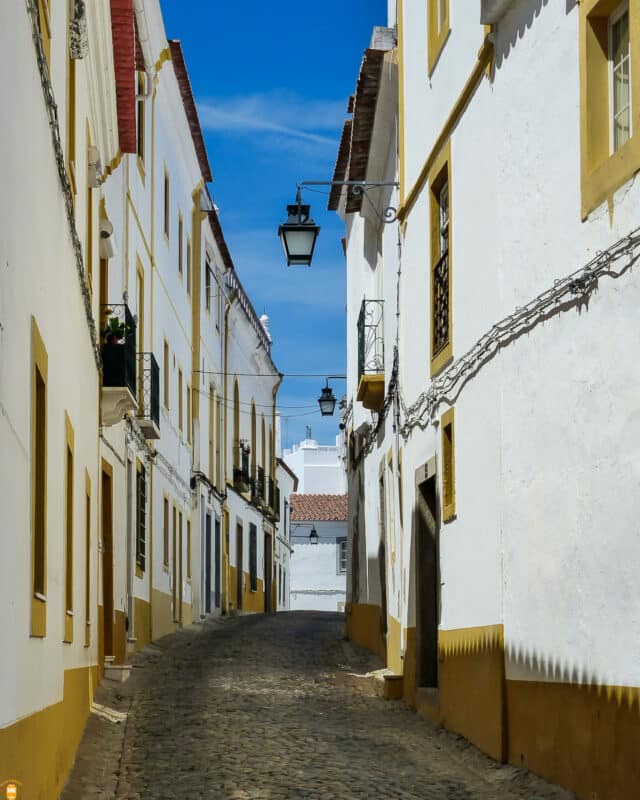

Located in Largo do Conde de Vila Flor, the Roman Temple of Évora, wrongly known as Diana’s Temple, is definitely the ex-libris of this city and a place you must go to to take some photographs and admire.
Built around the 1st century, on what was the main square of Évora at that time, this temple underwent some changes throughout the centuries. However, after the invasions of the Germanic peoples in the 5th century, not much has remained from this beautiful temple.
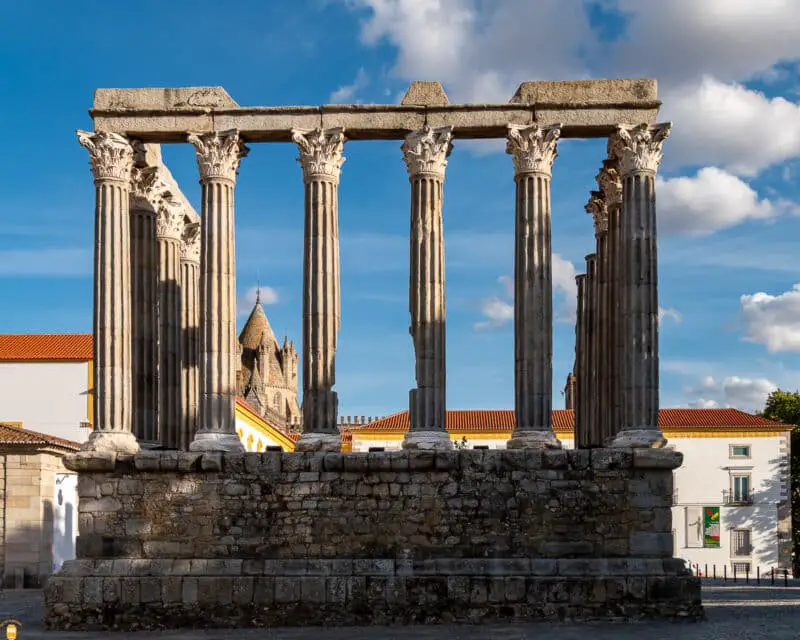
Another place you must definitely go to when you visit Alentejo, and Évora in particular, is the Cathedral of Évora, the biggest medieval cathedral in Portugal, built almost eight centuries ago.
Here, take the opportunity to admire the beautiful facade, the cloister, the chancel and much more.
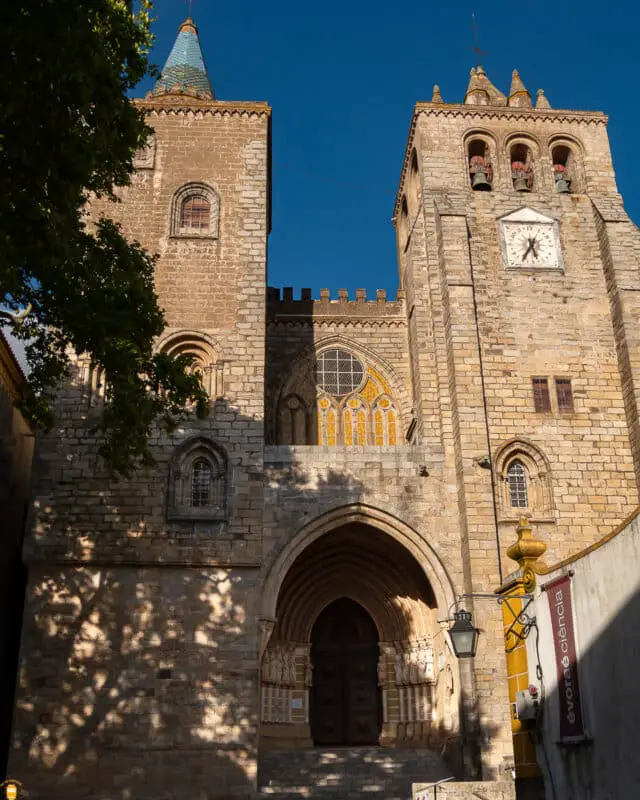
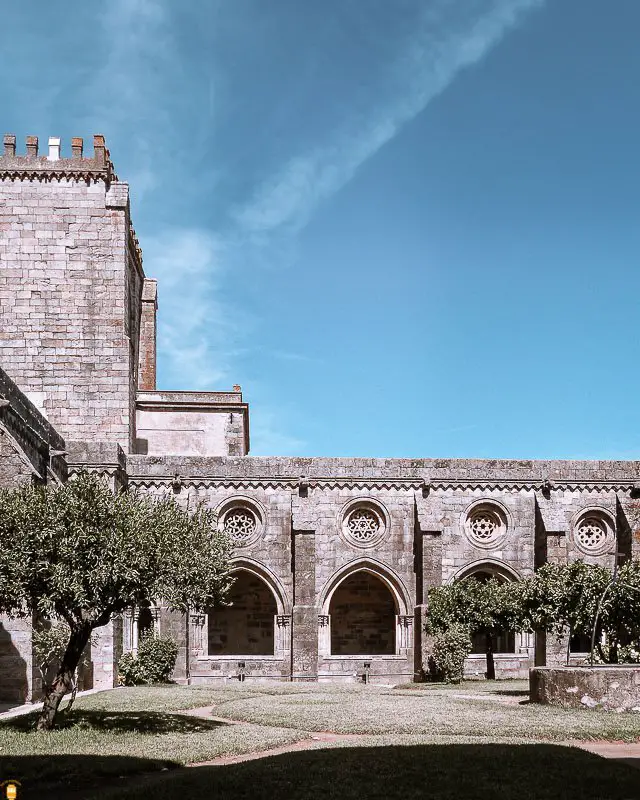
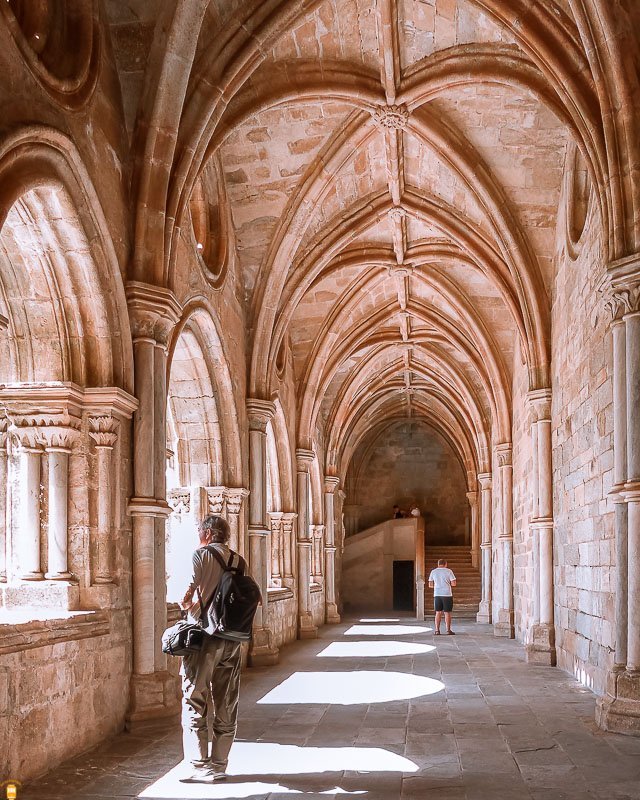
Next, return to your hotel and enjoy your last night in Évora, definitely a city you won’t forget when you visit Alentejo.
If you want to know more about this wonderful city, read my article on What to do in Évora in one day, the beautiful capital of Alentejo.
Day 5 – Monsaraz – Beja
Begin your day by leaving Évora and, if you have the opportunity, admire the arches of the Água de Prata Aqueduct that stretches for some kilometres until it gets to the Convent of São Bento de Cástris, an old women’s monastery founded in 1274.
Next, drive towards Monsaraz (do not mistake with Reguengos de Monsaraz), located 55 km east of Évora.

Located on top of a hill, Monsaraz is one of the most beautiful villages in Portugal. With an important cultural and landscape heritage, this is a place you can’t miss when you visit Alentejo.
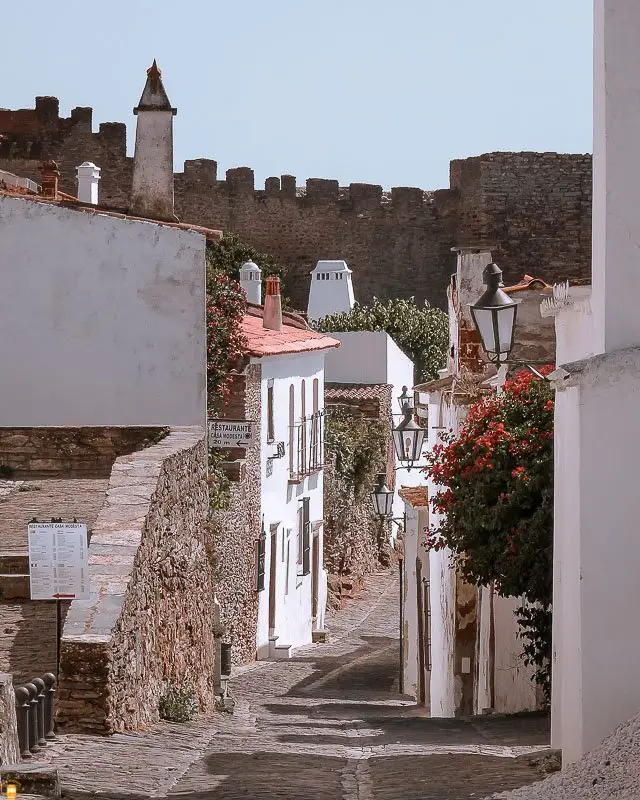

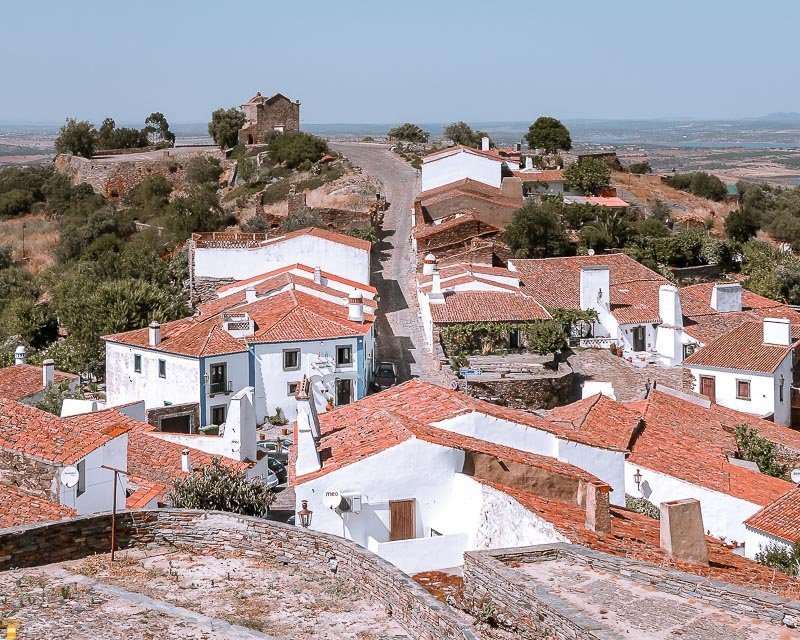
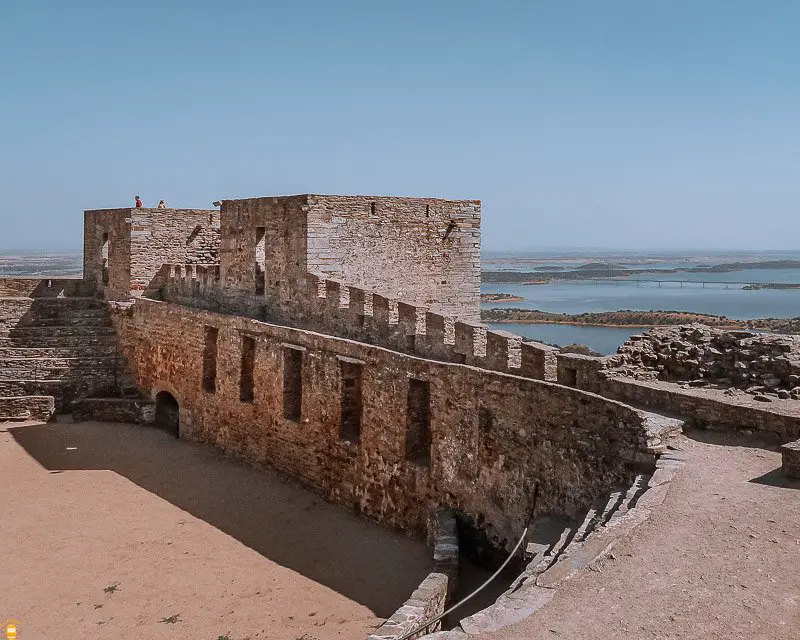
Apart from enjoying the amazing views over the valley and Alqueva lake, one of the biggest artificial lakes in Europe, you’ll certainly love strolling through the picturesque streets and admiring the beautiful houses painted in white.
You can also take the opportunity to admire the castle and walls of this place which was once the sentinel of Guadiana river and first line of defense against the Spanish troops.
In the afternoon, head southwest towards the last destination in the Alentejo countryside, the city of Beja.
This city is considered one of the oldest cities in Portugal and there are historical references of this place since at least the 4th century B.C., at a time when the Celts occupied certain areas of the Iberian Peninsula.
In the following centuries, there were some other peoples settling here with particular emphasis for the Romans and the Moorish, even though there are some traces of the presence of the Carthaginians, Swedes and Visigoths.
You can relax in this city for a while and stroll through some of the beautiful streets, especially those around the castle of Beja.
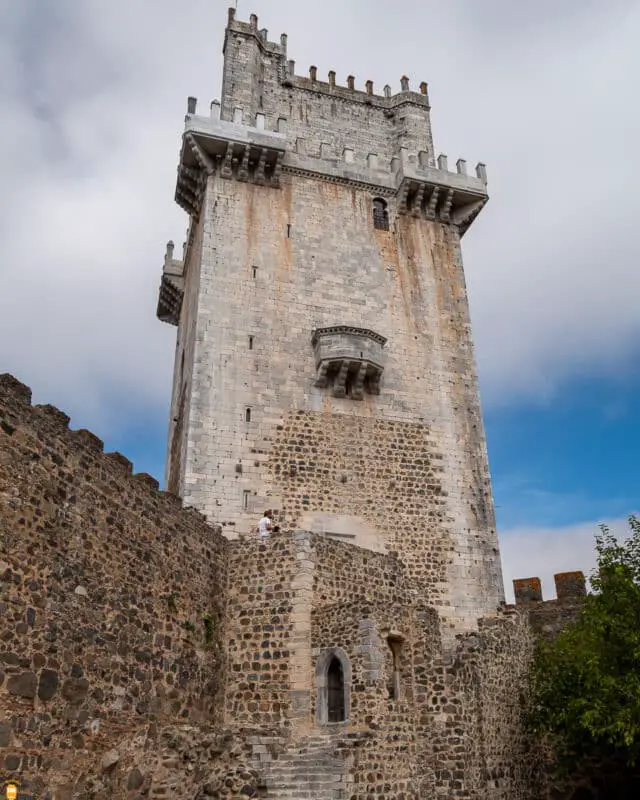
A great example of medieval military architecture with predominance of Manueline, Romanic, Mannerist and Gothic styles, the beautiful castle of Beja became bigger and modernized throughout the centuries, especially in a context of defense from the Castilian troops.
Apart from the beauty of its walls, you’ll find in the castle of Beja the biggest donjon in Portugal, 40 metres high. From here, you’ll have a unique perspective over the city of Beja and the surrounding landscape.
Next, leave Beja and drive west to Vila Nova de Milfontes where you can spend the night and prepare yourself for the next day – one thing is certain, it’ll be a day to remember.
To spend the night in Vila Nova de Milfontes, you can choose from these two great hotels.
Duna Parque Beach Club is definitely one of the favourite places for people who want to spend the night in Vila Nova de Milfontes. By staying in this place, you’ll be able to enjoy the magnificent apartments with kitchenette, two pools, a mini golf course and much more; beaches are located just a few metres away.
As you would expect, this hotel is also one of the favourite accommodations for visitors and is located just a few metres from the beautiful beaches of Vila Nova de Milfontes. Enjoy the amazing views this hotel offers and all of its great amenities.
Day 6 – Southwest Alentejo and Costa Vicentina Natural Park
There is one thing you can’t miss when you visit Alentejo: enjoy the magnificent beaches and landscapes of this wonderful region. So don’t worry, this day will be all about Nature and you’ll have two interesting options to choose from.
Option 1
My first suggestion for this day (and depending on weather conditions) is for you to spend the morning and the afternoon in one or two of the several and amazing beaches that you’ll find along the coastline, in the wonderful Southwest Alentejo and Costa Vicentina Natural Park.
Don’t worry if you don’t want to leave Vila Nova de Milfontes since this town has some beaches where you can relax. Take the opportunity to discover Franquia beach and Farol beach, both located in Mira river mouth, on the north shore, and Furnas beach, on the south shore.
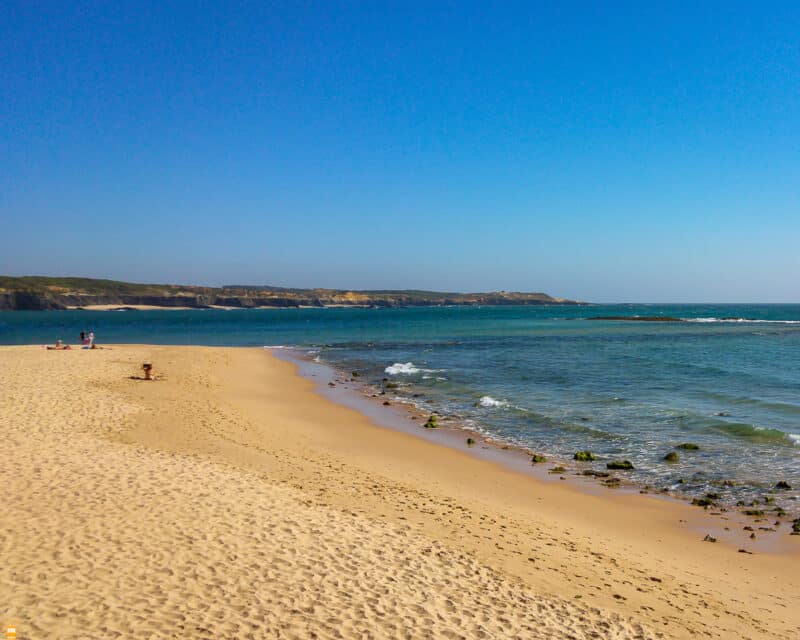
In Porto Covo, located 20 km north of Vila Nova de Milfontes, you’ll find some of the most beautiful beaches of Alentejo: Samoqueira beach, Porto Covo beach, Buizinhos beach, and others.
Porto Covo is clearly a touristy village due to its magnificent beaches but it’ll be worth your visit. Take the opportunity to have lunch in one of the typical restaurants and enjoy some local cuisine.

You’ll also find some wonderful beaches to the south of Vila Nova de Milfontes where you can spend an amazing morning and afternoon.
Discover, 15 km south of Vila Nova de Milfontes, Almograve beach that is divided into two areas: one stands out for its rocks and cliffs while the other has beautiful dunes.
Another beach that you can enjoy to the south of Vila Nova de Milfontes is Zambujeira do Mar beach. Surrounded by cliffs, this beach also has perfect conditions for surfing and bodyboarding.

Apart from these beaches, you can also read our article with the Top 10 of the best Alentejo beaches.
Option 2
If you don’t want to spend your whole day in the beach, we have the perfect solution for you to enjoy your morning or afternoon.
When you visit Alentejo, don’t hesitate to discover Rota Vicentina, where you’ll find some of the best leading quality trails in Europe.
I recommend that you discover one of the four circular routes you’ll find in this region so that you can begin and end your hike in the same place; these four routes also stand out for their distance (13 km is the longest route you’ll get).
S. Luís Gardens route is considered as the easiest, shortest and most accessible of all, and it has a distance of 3.5 km where the forest is a constant presence. If you’re not fit or don’t want to go on a longer hike, then this is the perfect choice for you.
With a total distance of 8 km and located close to the sea, The Dunes of Almograve is another great option. Despite being somewhat difficult in comparison to the previous route, here you’ll have the opportunity to admire the natural beauty and, in particular, the dunes and its fragrant flora.

With a total distance of 11.5 km, you can also choose Troviscais to Mira route. Further away from the coastline, this circular route is one of the best for birdwatching, especially along Mira river; you can also take advantage of its 125-metre maximum altitude to admire the surrounding landscape.
Last but not the least, located in the village of Santa Clara, 50 km from Vila Nova de Milfontes, you’ll find the Santa Clara Routes.
Actually, these are two circular routes that cross each other at that village: the first is 10 km long and will take you to the shores of Mira river and to the Santa Clara Dam reservoir; the second is 13 km long and will also take you along Mira river where you can admire the beautiful fauna and flora.
Information: for further information about these and other trails, don’t hesitate to check Rota Vicentina’s site.
Enjoy the rest of your day relaxing in one of the beaches mentioned above, making this day one to remember after your visit to Alentejo.
Day 7 – Faro
This day will be shorter because you’ll have to drive south, to the airport of Faro, located 165 km southeast of Vila Nova de Milfontes. Enjoy your last trip through Alentejo and admire the fields and beautiful plains of the biggest region in Portugal.
If, on the other hand, you visit Alentejo and then still have some extra days to spend in Portugal then we recommend you drive south, along Costa Vicentina, until you get to Sagres. Explore the wonderful region of Algarve and discover all of its wonders, much more than just the amazing beaches.
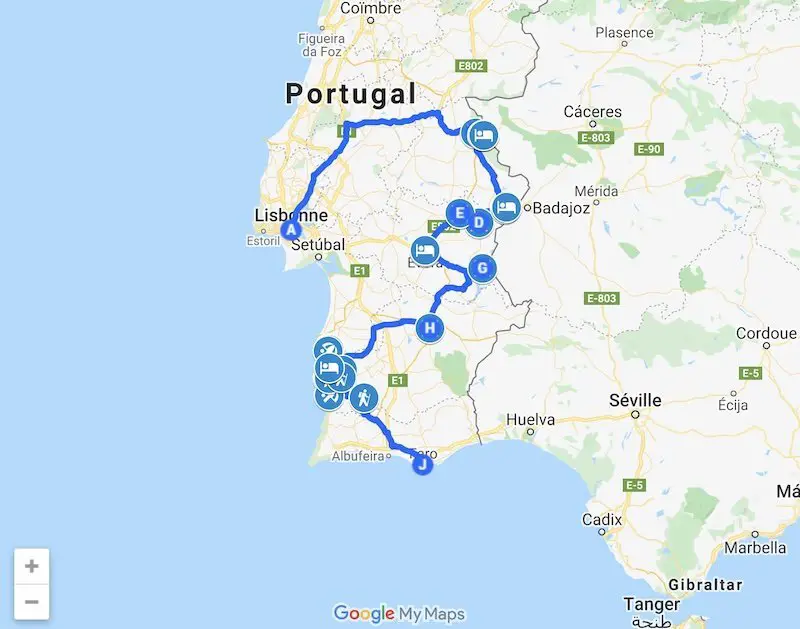
Information: this map highlights the points of interest, the route between Lisbon – Alentejo – Faro and places where you can spend the night. You can toggle between the different layers by clicking the icon in the top left corner of the map.
Are you going to visit Alentejo? Then don’t hesitate to book your hotel room, your car or the best activities by clicking the links below. This way you are helping me in the development of my blog and I’ll be able to offer you free tips and travel guides so that you can better prepare your visit to Portugal. Thank you!

